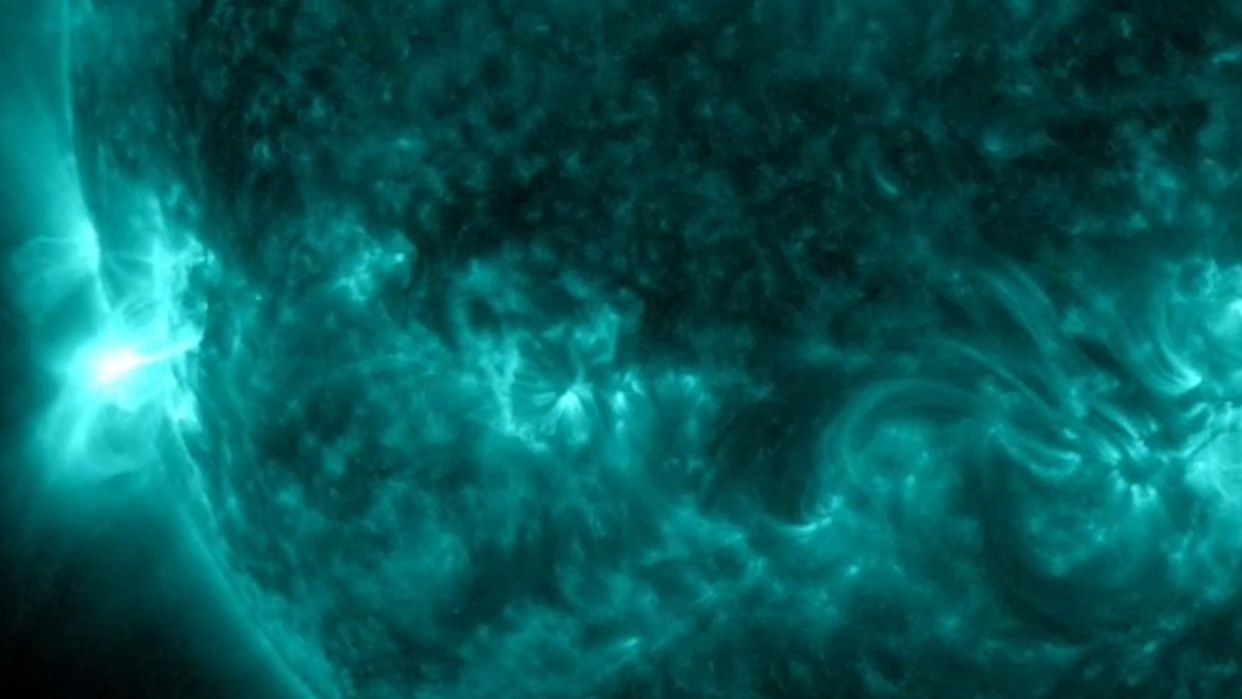Sun unleashes giant X-flare in outburst that could spark auroras on Mars (video)

Behold the power of the sun!
Our star unleashed an X-flare — the strongest type of solar radiation outburst — at 1:09 p.m. EDT (1709 GMT) on Tuesday (June 20).
Footage of the flare was caught by NASA's Solar Dynamics Observatory, which keeps a constant watch on sun activity alongside other agency satellites and observatories from the European Space Agency, among other entities.
Related: Space weather: What is it and how is it predicted?

"Solar flares are powerful bursts of radiation," NASA's sun account on Twitter stated. "Harmful radiation from a flare cannot pass through Earth's atmosphere to physically affect humans on the ground. However — when intense enough — they can disturb the atmosphere in the layer where GPS and communications signals travel."
The flare was associated with a coronal mass ejection (CME), a huge cloud of superheated plasma that the sun blasted into space. The CME was not aimed at Earth and, as such, it will not ramp up any auroral displays here, according to SpaceWeather.com, citing a NASA model.
But the solar plasma may spark a glowing light show on Mars that will be visible in a few days to orbiters there, such as NASA's Mars Atmosphere and Volatile Evolution (MAVEN).
RELATED STORIES:
— See amazing new sun photos from the world's largest solar telescope
The sun is currently nearing the peak of its 11-year activity cycle, with many sunspots clustering on the surface. Sunspots — hotbeds of magnetic activity — serve as launch pads for flares and CMES.
Normally, these eruptions are harmless to humanity, causing only light shows. But NASA and other agencies keep an eye on the sun just in case a warning is required to protect essential infrastructure, like power lines or satellites.

